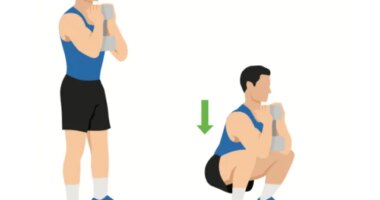Lacing up your sneakers and heading outdoors for a walk is a simple yet beneficial form of cardio to stay in great shape. After all, research shows that engaging in a walking habit can boost one’s aerobic fitness and decrease body weight, percentage of body fat, and body mass index (BMI). However, you may ask yourself, “Is walking twice a week enough to get fit?”
Amid today’s hectic, always-on-the-go lifestyle, it’s common to wonder whether a time-efficient, low-commitment fitness routine like this can make a difference. We spoke with a fitness expert who spills the tea.
Is Walking Twice a Week Enough To Get Fit?

The benefits of establishing a regular walking routine can’t be denied; walking helps decrease your risk of heart disease, maintain metabolic health, and keep a healthy weight. “Going for a walk can also be great for your mental health and stimulate cognitive function,” explains April Gatlin, senior master coach for STRIDE Fitness.
If you can only commit to walking two days a week, some walking is better than no walking at all. However, to see noticeable changes in your endurance, strength, weight, and overall fitness, there are a few things you can do, such as incorporating inclines, picking up the pace, or increasing the duration of your walks.
“An incline will recruit more muscles, primarily your quads and glutes, and lift your heart rate higher, in turn helping you burn more calories,” Gatlin tells us. “Even with an incline or fast pace, walking twice a week may not be enough to get fit, especially if you aren’t practicing a healthy diet. Ideally, a person should work to walk 9 to 10k steps a day to obtain the benefits above!”
Keep in mind that, according to the Physical Activity Guidelines for Americans, adults should aim for 150 minutes of moderately intense or 75 minutes of vigorous-intensity physical activity, along with two days of muscle-strengthening exercise, each week.
Engaging in additional physical activities on your non-walking days can help you reap the benefits of a well-rounded fitness routine. You can even wear ankle and/or arm weights during your walks to add a strength element to the mix.
Alexa Mellardo










